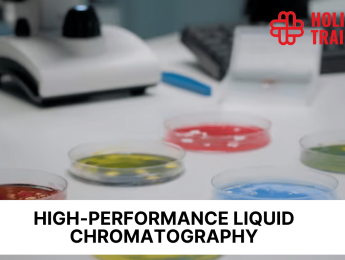- Table of Contents
- Introduction
- What Is High-Performance Liquid Chromatography?
- How Does Liquid Chromatography Work?
- The Stationary Phase: The Journey Begins
- The Mobile Phase: A Fluidic Symphony
- Elution: Unravelling the Mixture
- Benefits of Liquid Chromatography
- Versatility and Applications
- Sensitivity and Accuracy
- High Resolution and Efficiency
- Automation and Throughput
- Quantitative Analysis
- Why Column Choice is Vital in HPLC
- Selectivity and Separation Power
- Sample Type and Compatibility
- Efficiency and Throughput
- Sensitivity and Detection Limit
- Method Transfer and Reproducibility
- Difference Between Gas and Liquid Chromatography
- Mobile Phase
- Stationary Phase
- Analyte Properties
- Sensitivity and Detection
- Instrumentation and Analysis Time
- The Impact of Technology on Liquid Chromatography
- Ultra-High-Pressure Liquid Chromatography (UHPLC)
- Column Technologies
- Integration of Automation and Data Processing
- The Future of Liquid Chromatography
- Conclusion
Introduction
Embark on a captivating journey through the fascinating realm of liquid chromatography. This powerful analytical technique, particularly High-Performance Liquid Chromatography (HPLC), has revolutionised how scientists separate and analyse complex mixtures. In this blog post, we will explore the inner workings of HPLC, the importance of column selection, and the multitude of benefits it brings to the realm of separation science.
What Is High-Performance Liquid Chromatography?
High-Performance Liquid Chromatography (HPLC) is a refined and advanced version of liquid chromatography. It is one of the most widely used analytical techniques in various industries, including pharmaceuticals, environmental testing, food and beverage, and forensic science. HPLC offers higher resolution, sensitivity, and speed compared to conventional liquid chromatography methods, making it an indispensable tool in modern laboratories.
How Does Liquid Chromatography Work?
At its core, liquid chromatography is a separation technique based on the differential interaction of analytes with a mobile phase (liquid) and a stationary phase (solid). The fundamental principle driving liquid chromatography is the distribution of components between these two phases, which allows for the separation of complex mixtures into individual constituents.
The Stationary Phase: The Journey Begins
The stationary phase is a critical component in liquid chromatography. It consists of a solid support material packed into a column. Commonly used materials for the stationary phase include silica gel, porous polymers, and other porous materials with specialised surface chemistries.
When the sample is injected into the liquid chromatograph, it is carried into the column by the mobile phase (usually a solvent or a mixture of solvents). The stationary phase's chemistry plays a pivotal role in determining how the analytes will interact with it, thus influencing the separation process.
Table 1: Common stationary phase materials in HPLC
Stationary Phase Material | Description | Applications |
Silica Gel | Porous material for general-purpose use | Pharmaceuticals, environmental testing |
Porous Polymers | Polymer-based material with versatile properties | Biomolecular studies, food and beverage |
C18 (Octadecyl Silane) | Hydrophobic material for non-polar compounds | Analysis of lipids, hydrophobic drugs |
Ion-Exchange Resins | Charged material for separating ions | Analysis of ionic species, proteins |
Zirconia | Durable material with excellent chemical stability | High-temperature applications, specialised analyses |
The Mobile Phase: A Fluidic Symphony
The mobile phase, as the name suggests, is the fluid that moves through the chromatographic system. It helps in the transportation of the sample through the column and facilitates the separation process. The selection of the mobile phase depends on the nature of the sample and the stationary phase chemistry.
In the case of HPLC, the mobile phase is pumped through the column at high pressures, hence the term "high-performance." This high pressure significantly enhances the separation efficiency, reducing analysis time without compromising the resolution.
Elution: Unravelling the Mixture
As the mobile phase travels through the column, analytes in the sample interact with the stationary phase to varying degrees. This results in different retention times for each component of the mixture. Components that have weaker interactions with the stationary phase will be eluted faster, while those with stronger interactions will take longer to elute.
The eluted components are detected by a detector that generates signals corresponding to the concentration of each analyte. These signals are then processed and recorded, producing chromatograms that represent the analytes' separation.
Benefits of Liquid Chromatography
Now that we have a basic understanding of how liquid chromatography works let us explore the numerous benefits it offers:
Versatility and Applications
Liquid chromatography's versatility allows it to analyse a wide range of samples, from small molecules, such as pharmaceutical drugs and environmental pollutants, to large biomolecules like proteins and nucleic acids. Its ability to handle various sample types and concentrations makes it an indispensable tool for researchers across diverse fields.
Sensitivity and Accuracy
The enhanced sensitivity of HPLC enables the detection and quantification of trace amounts of analytes in complex matrices. This is particularly crucial in pharmaceutical and environmental analysis, where even minute concentrations of impurities or pollutants can have significant implications.
High Resolution and Efficiency
HPLC's ability to provide high-resolution separations ensures that closely related compounds can be distinguished from one another accurately. This is of utmost importance in pharmaceutical analysis, where the presence of impurities or closely related compounds can affect a drug's efficacy and safety.
Automation and Throughput
Advancements in liquid chromatography technology have led to the automation of the entire process, from sample injection to data analysis. This automation not only increases efficiency but also reduces the risk of human error. Additionally, the high speed of HPLC analysis enables laboratories to process a large number of samples in a relatively short time.
Quantitative Analysis
Liquid chromatography can be coupled with various detectors, such as UV-Visible, fluorescence, or mass spectrometry, enabling precise and accurate quantification of analytes. This quantitative aspect is invaluable in pharmaceutical research, quality control, and compliance with regulatory standards.
Why Column Choice is Vital in HPLC
The column used in High-Performance Liquid Chromatography (HPLC) is not just a passive vessel; it is a critical element that significantly impacts the success and efficiency of the separation process. The choice of the HPLC column is a decision that should not be taken lightly, as it can greatly influence the resolution, selectivity, sensitivity, and overall performance of the analysis. Let's delve into the reasons why column choice is of utmost importance in HPLC.
Selectivity and Separation Power
One of the primary reasons column choice is crucial lies in its ability to impart selectivity to the separation process. Selectivity refers to the column's preference for specific interactions with analytes based on their physicochemical properties, such as size, polarity, and charge. Different columns have different selectivity profiles, and selecting the appropriate column can lead to better separation of complex mixtures.
For instance, when analysing a mixture containing structurally similar compounds, a column with high selectivity can distinguish subtle differences in their properties, resulting in improved resolution. On the other hand, using an inadequate column may cause co-elution, where analytes are not sufficiently separated, leading to inaccurate or unreliable results.
Sample Type and Compatibility
The nature of the sample being analysed plays a crucial role in column selection. Some samples may be highly complex, containing various compounds with a wide range of properties. In such cases, it becomes essential to choose a column that can handle the complexity and retain the analytes of interest while allowing unwanted components to elute quickly.
Additionally, the compatibility between the sample and the column material is critical. Certain samples may be reactive, acidic, or basic, and using an incompatible column can lead to degradation or chemical interactions, affecting the accuracy of the analysis.
Efficiency and Throughput
The efficiency of an HPLC column is a measure of its ability to separate analytes in a short amount of time while maintaining good resolution. A highly efficient column enables faster analysis, leading to increased throughput and improved laboratory productivity.
Furthermore, the column's dimensions, such as length and particle size, play a significant role in determining efficiency. Longer columns and smaller particle sizes generally provide higher efficiency but may require higher pressures. Balancing these factors is essential to achieve the desired separation performance.
Sensitivity and Detection Limit
In HPLC, sensitivity is closely related to the signal-to-noise ratio of the detected peaks. A column that generates less noise and delivers sharp, well-defined peaks can enhance sensitivity, allowing for the detection of low-concentration analytes with higher accuracy.
In contrast, using a column that produces broad, poorly resolved peaks can reduce sensitivity and make it challenging to quantify trace analytes accurately. Therefore, the choice of the column directly impacts the detection limit and, ultimately, the ability to identify and quantify compounds at low concentrations.
Method Transfer and Reproducibility
In analytical laboratories, method transferability and reproducibility are essential aspects to consider. Method transferability refers to the ability to replicate the same separation on different instruments or at different locations. When using standardised columns with consistent performance, it becomes easier to transfer methods between laboratories without compromising data integrity.
Moreover, column reproducibility is critical for obtaining consistent results within the same laboratory over time. Replacing a column with a different one may lead to variations in retention times, selectivity, and overall separation performance. To ensure method consistency, it is crucial to stick to the chosen column or thoroughly validate any changes in column choice.
Difference Between Gas and Liquid Chromatography
While both gas chromatography (GC) and liquid chromatography (LC) share the fundamental principle of separating analytes based on their interaction with a stationary phase, they differ significantly in terms of their mobile phase, stationary phase, and applications. Understanding the distinctions between these two powerful chromatographic techniques can help researchers choose the most appropriate method for their specific analytical needs.
Mobile Phase
The most apparent difference between GC and LC lies in their mobile phases. In gas chromatography, the mobile phase is a carrier gas (e.g., helium, nitrogen, or hydrogen), which transports the gaseous analytes through the column. On the other hand, liquid chromatography uses a liquid mobile phase (solvent or a mixture of solvents) to move the analytes through the column.
Stationary Phase
In GC, the stationary phase is usually a high-boiling-point liquid coated on a solid support material inside the column. This liquid coating, known as the stationary phase, interacts with the gaseous analytes during the separation process.
Conversely, liquid chromatography utilises a solid stationary phase packed into the column. The stationary phase's surface chemistry determines its interaction with the liquid mobile phase and the analytes, leading to their separation.
Analyte Properties
The choice between GC and LC largely depends on the properties of the analytes being analysed. GC is particularly suitable for analysing volatile and thermally stable compounds that can be vaporised without decomposition. It is commonly used in applications involving volatile organic compounds, hydrocarbons, and environmental pollutants.
On the other hand, LC is well-suited for analysing a broader range of compounds, including polar and non-volatile species, as well as thermally labile biomolecules like proteins and nucleic acids. LC's versatility makes it indispensable in pharmaceutical research, food and beverage analysis, and biomolecular studies.
Sensitivity and Detection
Gas chromatography often provides higher sensitivity compared to liquid chromatography. The gaseous state of the analytes in GC allows for efficient ionisation and detection in techniques like mass spectrometry, resulting in lower detection limits for volatile compounds.
In contrast, LC's sensitivity can be affected by the solvent's optical properties and the potential for chemical noise. However, the coupling of liquid chromatography with advanced detectors, such as high-sensitivity mass spectrometers, has bridged the sensitivity gap between the two techniques.
Instrumentation and Analysis Time
GC and LC also differ in terms of instrumentation complexity and analysis time. Gas chromatographs are typically simpler in design, as they do not require a high-pressure pumping system. As a result, GC analysis is often faster compared to LC. HPLC, with its high-pressure pumping system and fine-particle-packed columns, may require longer analysis times.
The Impact of Technology on Liquid Chromatography
In the ever-evolving landscape of analytical techniques, technology continues to be a driving force behind advancements in liquid chromatography, particularly in the realm of High-Performance Liquid Chromatography (HPLC). These technological innovations have not only refined the existing processes but have also opened up new possibilities in the field of separation science.
One of the most significant technological strides in liquid chromatography involves the enhancement of HPLC through cutting-edge instrumentation and methodologies. Traditional liquid chromatography methods often faced challenges related to speed, resolution, and sensitivity. However, with the advent of advanced technologies, the HPLC process has undergone a transformation.
Ultra-High-Pressure Liquid Chromatography (UHPLC)
One noteworthy technological advancement is the introduction of Ultra-High-Pressure Liquid Chromatography (UHPLC). Unlike conventional HPLC,UHPLC operates at significantly higher pressures, often exceeding 15,000 psi. This increased pressure allows for the use of smaller particle sizes in the stationary phase, leading to enhanced efficiency and faster separations.
The higher pressure in HPLC not only accelerates the analysis time but also contributes to improved resolution. This is particularly beneficial when dealing with complex mixtures where the ability to distinguish closely related compounds is crucial. Researchers now have the capability to achieve high-resolution separations in a fraction of the time compared to traditional HPLC methods.
Column Technologies
Another area where technology has made a substantial impact is in the design and development of chromatographic columns. Advanced column technologies, such ascore-shell particles and superficially porous particles, have emerged to address the challenges of traditional fully porous particles.
Core-shell particles, for instance, consist of a solid core surrounded by a thin layer of porous shell material. This design provides a balance between efficiency and backpressure, allowing for faster separations without compromising resolution. Such innovations in column design contribute significantly to the overall performance and capabilities of liquid chromatography systems.
Integration of Automation and Data Processing
Automation has become a hallmark of modern liquid chromatography systems. The integration of automated sample injection, solvent mixing, and column switching has streamlined the entire chromatographic process. This not only increases the overall efficiency of the analysis but also reduces the risk of human error.
Moreover, advancements in data processing and interpretation have paved the way for more accurate and reliable results. Cutting-edge software allows for real-time monitoring of chromatographic runs, precisepeak identification, and efficient data analysis. Researchers can now extract meaningful insights from complex chromatograms with greater ease and speed.
The Future of Liquid Chromatography
As technology continues to advance, the future of liquid chromatography looks promising. We can anticipate further improvements in instrument sensitivity, resolution, and overall system integration. The integration of artificial intelligence and machine learning into chromatographic data analysis holds the potential to revolutionise how we approach complex mixture separations.
In short, technology is reshaping the landscape of liquid chromatography, particularly in the domain of High-Performance Liquid Chromatography. These advancements not only elevate the efficiency and accuracy of separation science but also empower scientists to delve deeper into the complexities of various sample analyses. As we embark on this technological journey, the role of liquid chromatography in scientific discovery is poised to expand, offering new possibilities for researchers across diverse fields.
Conclusion
In conclusion, liquid chromatography, particularly High-Performance Liquid Chromatography, is a remarkable analytical technique that has revolutionised the field of separation science. Its versatility, sensitivity, resolution, and automation capabilities have made it an indispensable tool in various industries, including pharmaceuticals, environmental monitoring, food safety, and more.
As technology continues to advance, we can expect liquid chromatography to play an even more significant role in understanding complex mixtures and unravelling the mysteries of science. Whether it's identifying impurities in drugs, detecting pollutants in water, or analysing biomolecules, liquid chromatography will continue to empower researchers and scientists to make groundbreaking discoveries and contribute to a better, safer, and healthier world.
In the pursuit of mastering the art of chromatography and honing your analytical skills, consider enrolling in our course ‘Hydrocarbon Measuring: Best Practices.’ This comprehensive programme delves deeper into the processes of gas chromatography separation, offering valuable insights into analysing a wide variation of saturated and unsaturated aliphatic compounds commonly encountered in the petrochemical and environmental industries. Expand your knowledge and expertise to become a proficient chromatograph in this dynamic field.
























